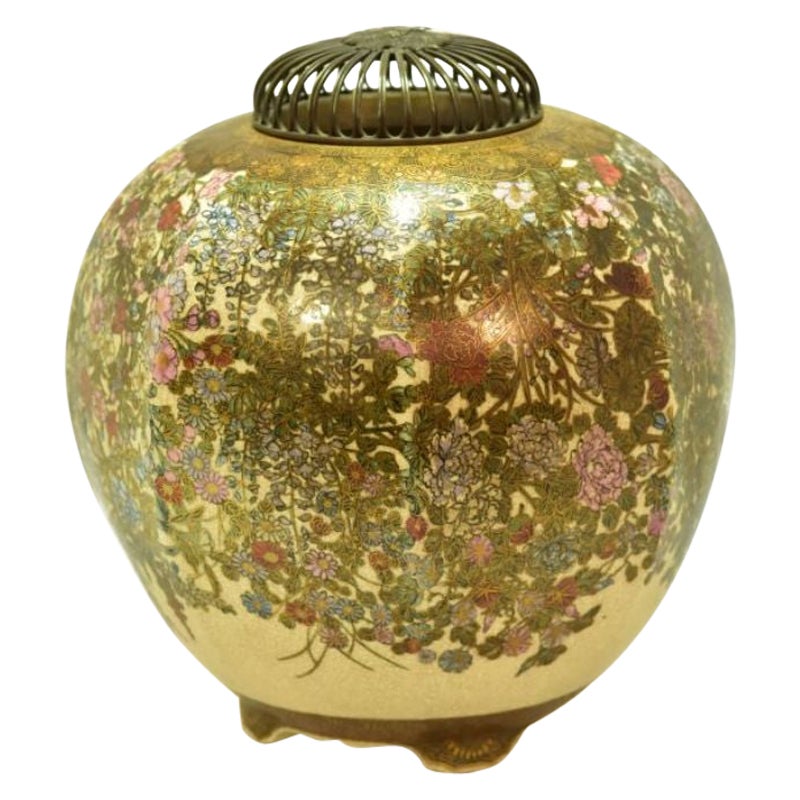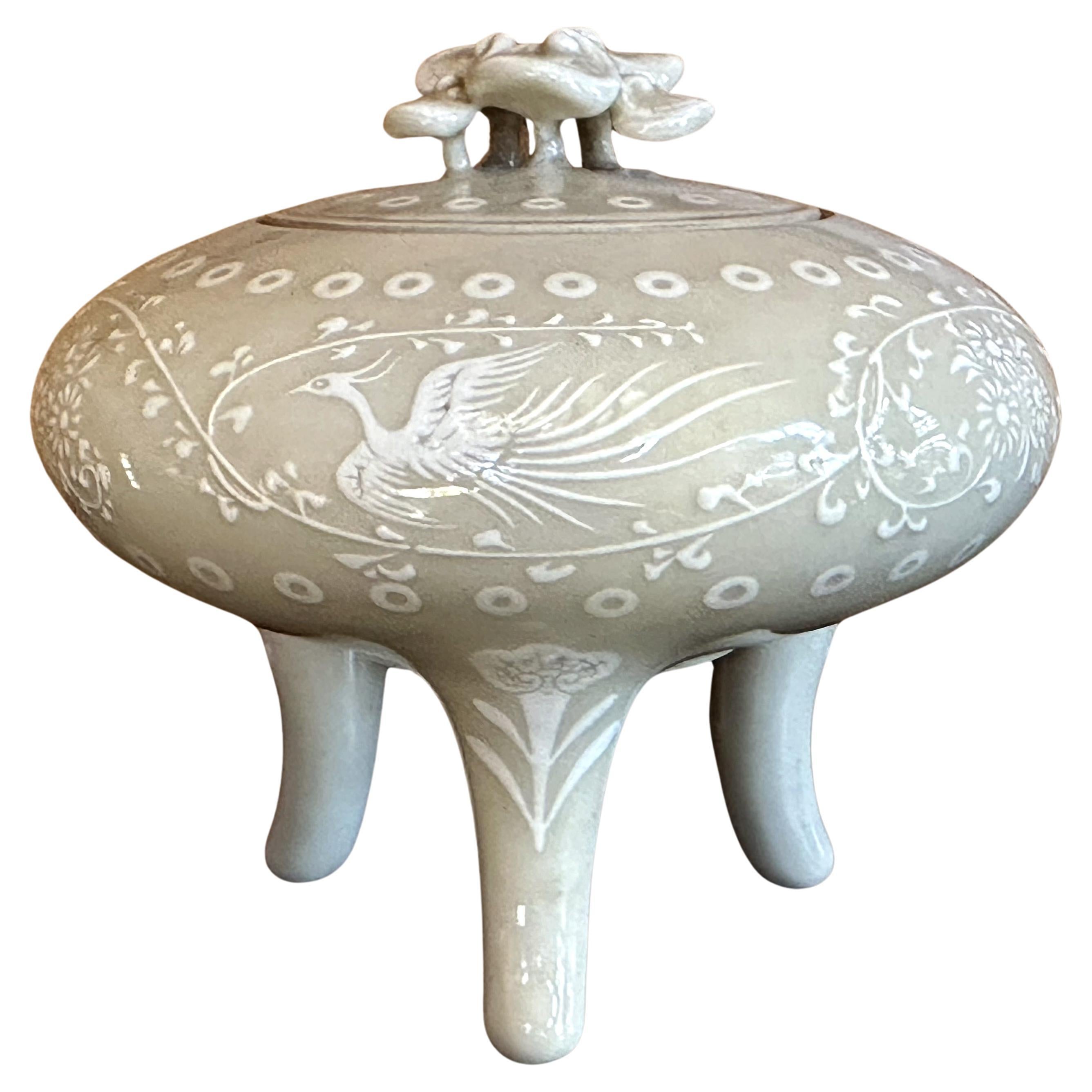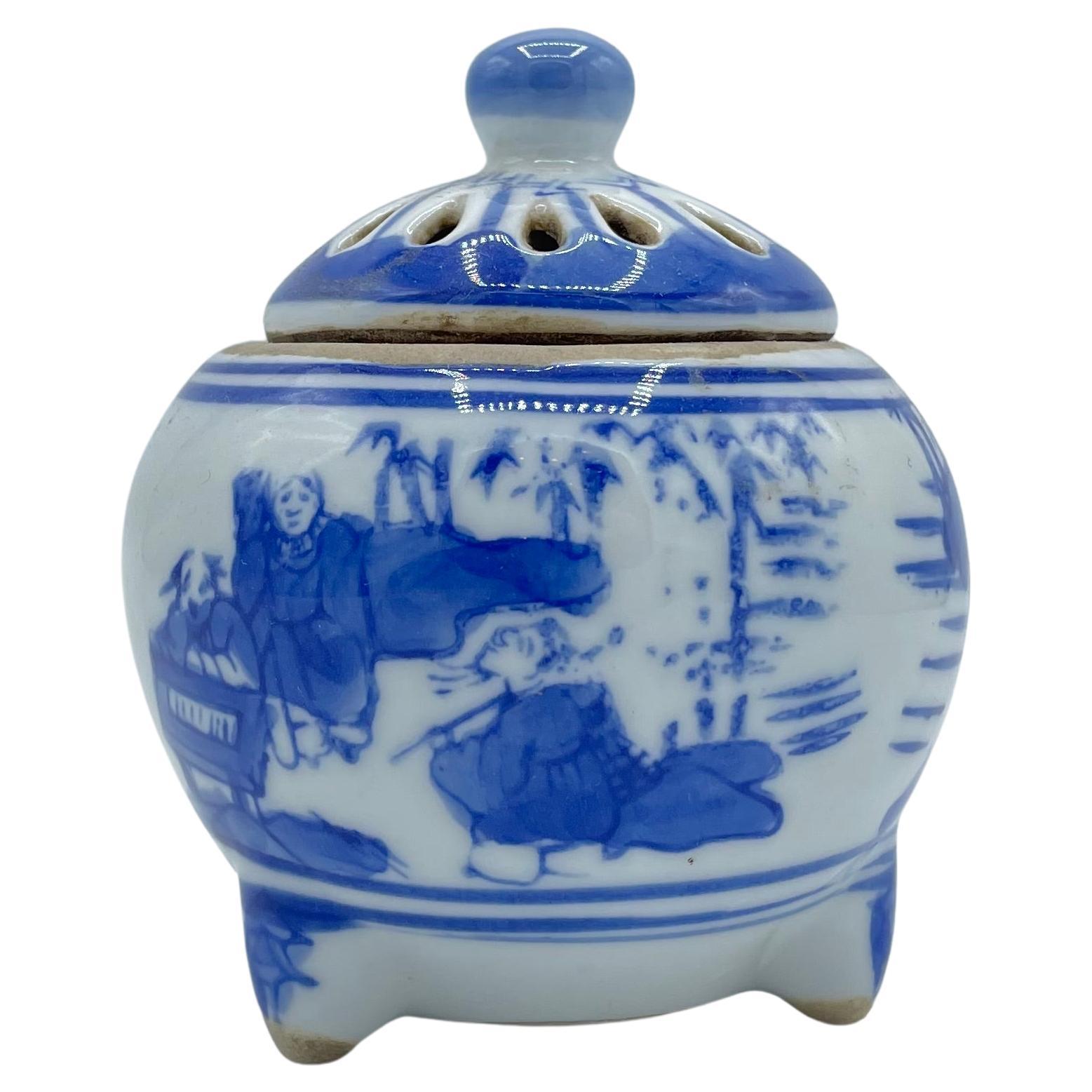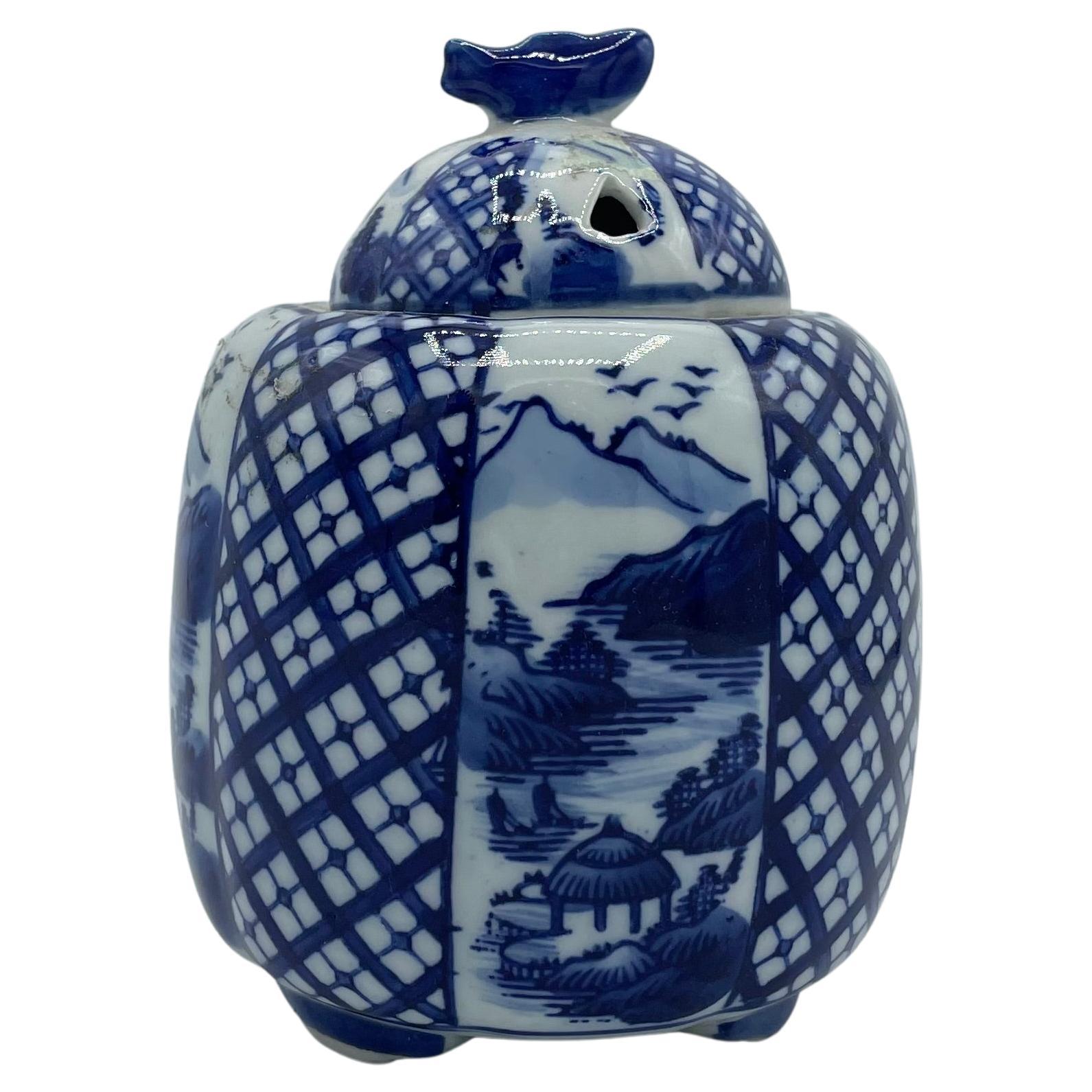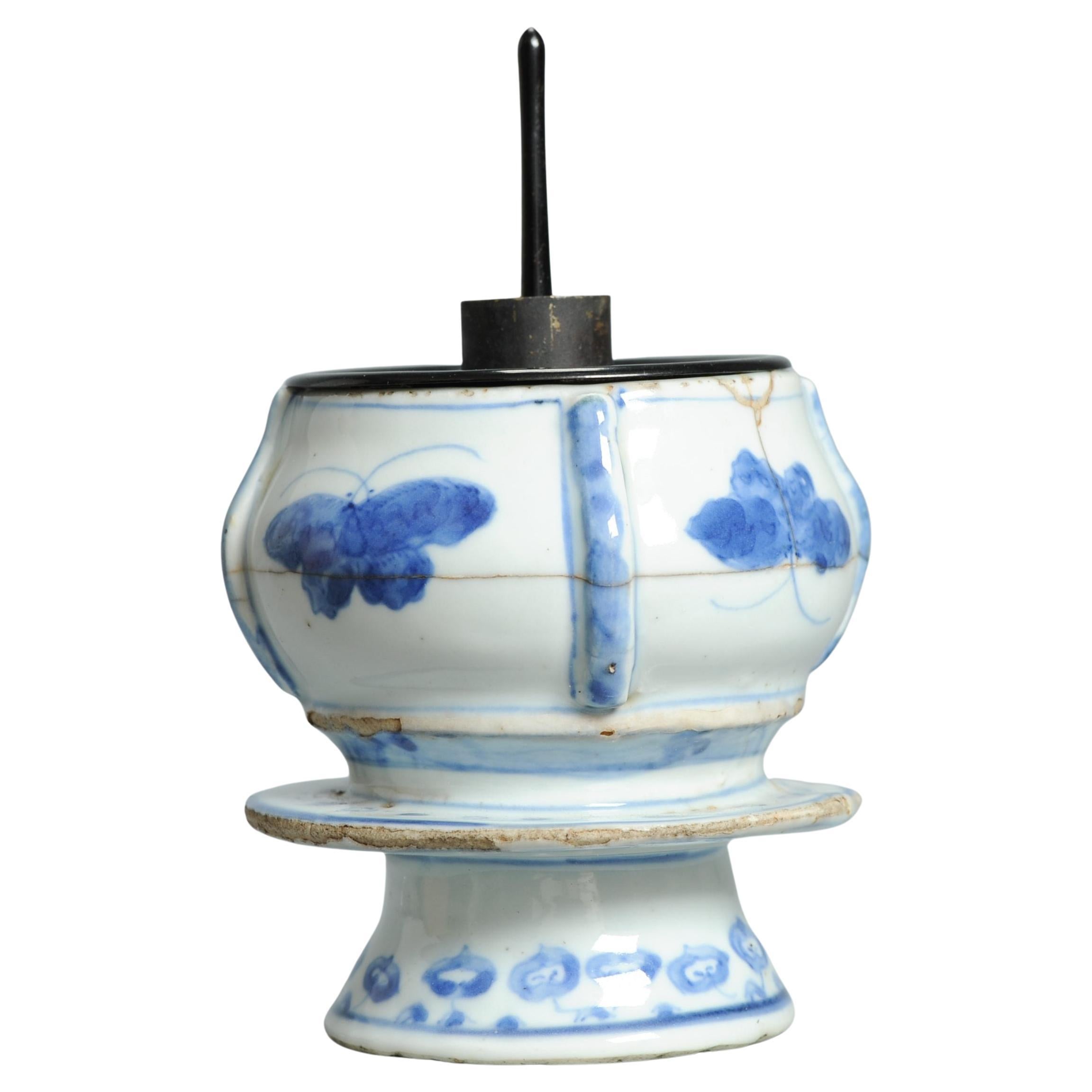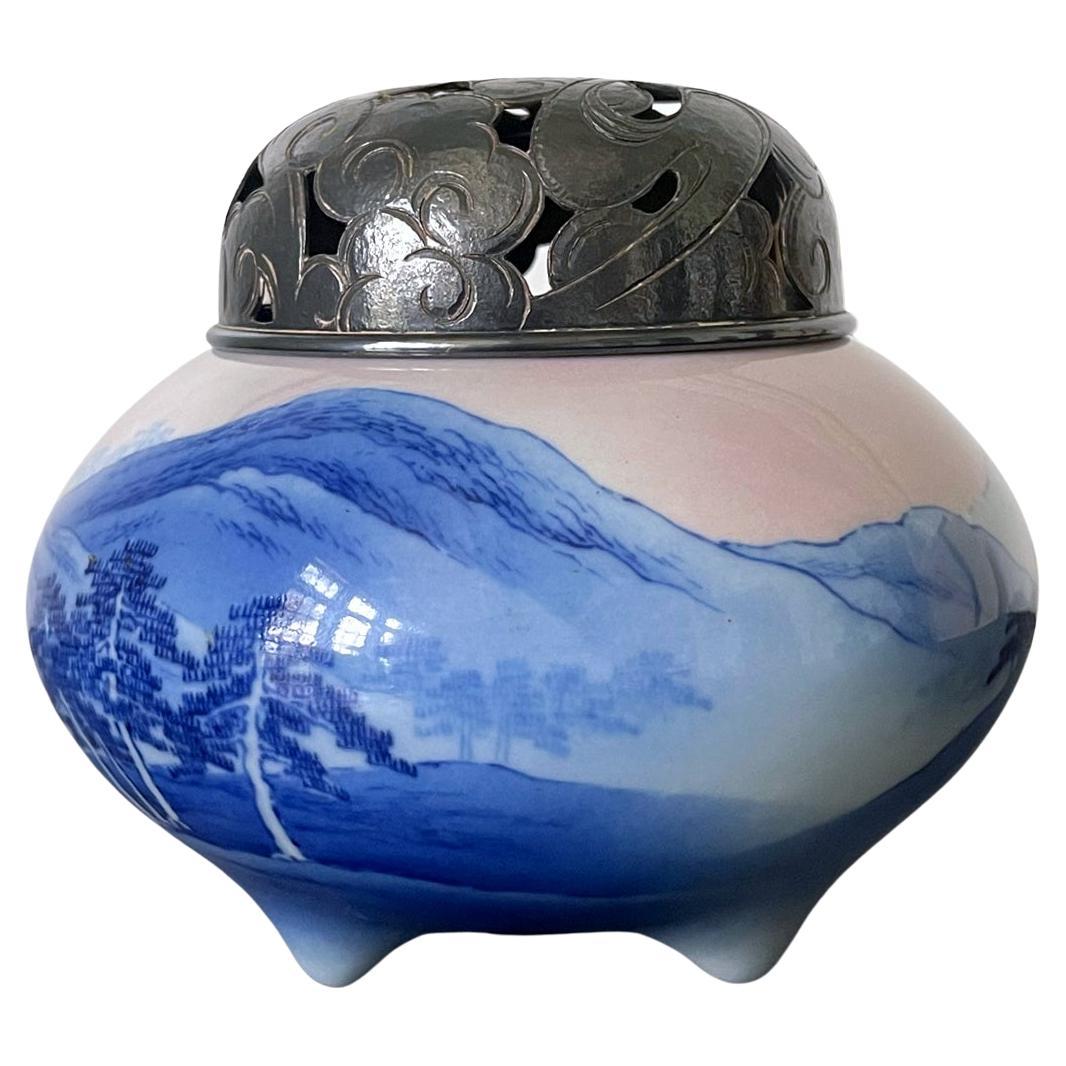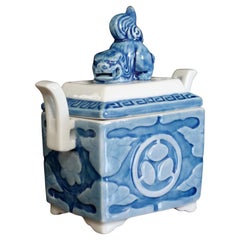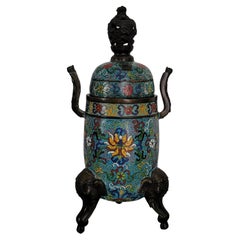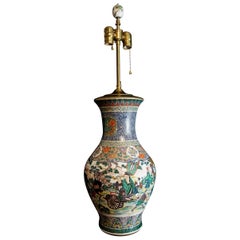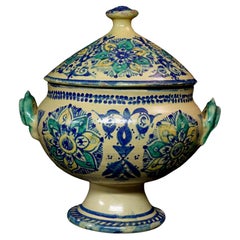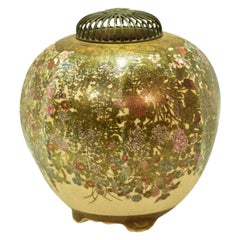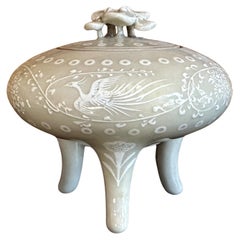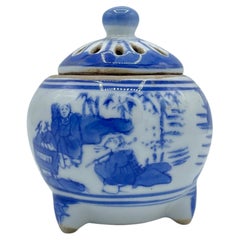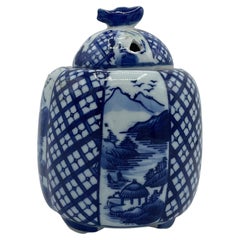Items Similar to Antique Japanese Porcelain Brazier 'Incense Burner', Signed
Want more images or videos?
Request additional images or videos from the seller
1 of 11
Antique Japanese Porcelain Brazier 'Incense Burner', Signed
$1,275
£967.44
€1,106.18
CA$1,780.83
A$1,980.04
CHF 1,033.87
MX$24,101.91
NOK 13,191.70
SEK 12,359.99
DKK 8,255.64
Shipping
Retrieving quote...The 1stDibs Promise:
Authenticity Guarantee,
Money-Back Guarantee,
24-Hour Cancellation
About the Item
A very unusual Antique Japanese Porcelain Brazier (Incense Burner) with green checker pattern, Signed on the bottom.
- Dimensions:Height: 3.5 in (8.89 cm)Width: 2.75 in (6.99 cm)Depth: 2.75 in (6.99 cm)
- Materials and Techniques:
- Place of Origin:
- Period:
- Date of Manufacture:Early 20th Century
- Condition:Wear consistent with age and use.
- Seller Location:Norton, MA
- Reference Number:1stDibs: LU5848227187852
About the Seller
5.0
Platinum Seller
Premium sellers with a 4.7+ rating and 24-hour response times
Established in 2000
1stDibs seller since 2021
116 sales on 1stDibs
Typical response time: <1 hour
- ShippingRetrieving quote...Shipping from: Norton, MA
- Return Policy
Authenticity Guarantee
In the unlikely event there’s an issue with an item’s authenticity, contact us within 1 year for a full refund. DetailsMoney-Back Guarantee
If your item is not as described, is damaged in transit, or does not arrive, contact us within 7 days for a full refund. Details24-Hour Cancellation
You have a 24-hour grace period in which to reconsider your purchase, with no questions asked.Vetted Professional Sellers
Our world-class sellers must adhere to strict standards for service and quality, maintaining the integrity of our listings.Price-Match Guarantee
If you find that a seller listed the same item for a lower price elsewhere, we’ll match it.Trusted Global Delivery
Our best-in-class carrier network provides specialized shipping options worldwide, including custom delivery.More From This Seller
View AllOld Japanese Porcelain Lidded Incense Burner in the Original Box
Located in Norton, MA
Old Japanese porcelain lidded incense burner in the original box
The lid with the lion, two pierced handles on each side, and four feet at the four corners to stand.
This is an old...
Category
Mid-20th Century Ceramics
Materials
Porcelain
Large Chinese Cloisonné Tripod Incense Buner
Located in Norton, MA
Chinese Cloisonne Tripod incense holder having bronze of 3 elephant heads form the feet, dragon form handles on two sides and a big dragon head finial, alo...
Category
Antique 19th Century Chinese Chinese Export Metalwork
Materials
Copper
Antique Large Kutani Porcelain Vase Table Lamp, 19th Century, Signed
Located in Norton, MA
Porcelain vase. Japan. 19th century. Baluster form. Kutani ware. Green type. Decoration of scholars and brocade patterns. 18" high of the vase plus the rod...
Category
Antique 19th Century Japanese Table Lamps
Materials
Brass
Morocco Covered Bowl, Jar, Early 20th Century
Located in Norton, MA
Stoneware-covered bowl. Morocco. Early 20th century. Decoration in blue, green, and yellow. Measure: 13in high.
Category
Early 20th Century Moroccan Pottery
Materials
Pottery
Japanese Antique a Large 19th Century Imari Bowl with Hard Wood Stand
Located in Norton, MA
Japanese antique a large 19th century Imari bowl with hard wood stand (2" H).
Category
Antique 19th Century Japanese Decorative Bowls
Materials
Porcelain
Antique A Japanese Lacquer Bowl with Stand
Located in Norton, MA
Black lacquerware bowl in fitted stand, with raised gilded floral and vine decoration, 6 3/4" high, 7 1/2" sq. The Bowl is 4.25" Dia.
Category
Early 20th Century Japanese Decorative Baskets
Materials
Wood
You May Also Like
Incense Burner in Satsuma Earthenware
Located in Marseille, FR
JAPAN - Circa 1900 Incense burner in Satsuma earthenware with vegetal decoration. Openwork lid in shibuichi surmounted by a flower in slight relief...
Category
Antique 19th Century Japanese More Asian Art, Objects and Furniture
Materials
Earthenware
Rare Japanese Porcelain Incense Burner with Inlays Makuzu Kozan
By Makuzu Kozan
Located in Atlanta, GA
A porcelain incense burner (koro) made by Japanese potter Makuzu Kozan (also known as Miyagawa Kozan, 1842-1916) circa 1890s-1900s (end of Meiji Period). The koro features an elegant...
Category
Antique Late 19th Century Japanese Meiji Ceramics
Materials
Ceramic
Japanese Porcelain Incense Burner 1970s Karabito
Located in Paris, FR
This is an incense burner which was made in Japan around 1970s in Showa era. This incense burner is made with ceramic.
Dimensions: 8 x 8 x H10 cm
Category
Vintage 1970s Japanese Showa Ceramics
Materials
Ceramic
Japanese Porcelain Incense Burner 1970s LandScape
Located in Paris, FR
This is an incense burner which was made in Japan around 1970s in Showa era. This incense burner is made with porcelain.
Dimensions: 10 x 10 x H12.5 cm
Category
Vintage 1970s Japanese Showa Antiquities
Materials
Porcelain
Antique Ming 1620-1644 Chinese Porcelain Kosometsuke Incense Burner Decorated Bu
Located in Amsterdam, Noord Holland
A Chinese blue and white porcelain incense burner. Pictured in the book of Tang Ying Academy about the Kosometsuke exhibition in the Jingdezhen Yanshan Art Museum. Also with beuatifu...
Category
Antique 17th Century Chinese Ming Ceramics
Materials
Porcelain
Japanese Glazed Ceramic and Silver Koro Incense Burner Makuzu Kozan
By Makuzu Kozan
Located in Atlanta, GA
A tri-pod ceramic incense burner (koro) by Japanese Imperial potter Makuzu Kozan (1842-1916) circa late Meiji to the start of Taisho period (1890-1910s). A fine example of the artist's work belonging to the late part of his underglaze paint phase (started around 1887 until his death), the surface of the koro was painted in beautiful shades of blue to depict a continuous landscape not unlike a traditional ink and watercolor hand scroll. The rise and fall mountains recede and fade into the horizon and are dotted with groves of pines. The sky is painted with a beautiful subtle shade of pink, suggesting a time of sunrise or sunset. The koro is fitted with an ensuite reticulated sterling silver hoya (incense cover), pierced with swirling cloud and marked with "pure silver' in Kanji. The base is signed in underglaze blue "Makuzu Kozan Sei" within a double ring. The piece is beautifully potted in form and the decoration was done with expertise using the novel technique developed by Kozan called Fuki-e (the blow painting), in order to achieve the striking landscape known as "Mountain and Water" with sense of dimensions and gradient, the poetic effects normally conveyed only by sumi ink staining on paper. The piece comes with an unsigned tomobako (wood storage box) of a recent age.
Also known as Miyagawa Kozan (1842–1916), Makuzu Kozan was one of the most established and collected ceramist from Meiji Period. Born as Miyagawa Toranosuke, Kozan established his pottery studio in Yokohama around 1870s and later became one of the appointed artists to the Japanese Imperial household. His work was exhibited in many international fairs that the Meiji government participated at the turn of the century and won many grand prizes. Being one of the most creative ceramists, Kozan started experimenting with new chemical colors from the West in the format of his porcelain glaze around 1880s. New colors allowed him to create underglaze designs that appeared bright, smooth and glossy. He even invented his own receipt of cobalt blue to achieve a much brighter yet softer shade, as evident on this vase. To create landscape that is realistic and dimensional, more common in the western paintings, he was inspired by the native Japanese ink painting technique developed around 1900 by Yokoyama...
Category
Antique Early 1900s Japanese Japonisme Ceramics
Materials
Silver
More Ways To Browse
Japanes Porcelain
Antique Burners
Antique Incense
Incense Burners
Japanese Incense
Antique Incense Burners
Antique Brazier
Japanese Incense Burner Antique
Japanese Brazier
Painted Japanese Bowl
Ming Blue White
Japanese Arita Blue And White
Japanese Kutani
Asian Brown Jars
Lotus Porcelain
Arita Blue White
Meiji Plate
Famille Rose 20th Century
